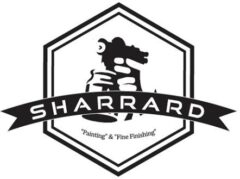Picking the right primer is one of the critical factors to delivering quality painting product on budget. A good primer will seal the surface allowing both easy and even distribution of the finish product. Primers can also be used to build up or level out a surface. The right primers can be very effective at filling in subtle surface variations and moving you closer to creating that perfect finish. Knowning the right primer to use will put you on the right path.
When to use primers. Anytime you have unfinished or bare wood or unfinished drywall you should be applying a sealer or primer. As well:
- A lot of people also over look the fact that drywall pulled back or exposed down to the brown paper is also an unsealed surface. When the brown paper is visible you will need the application of a sealer BEFORE the application of polyfilla or drywall compound. If you do not seal the exposed brown paper the polyfilla will not stick too well to the paper. This will cause the pollyfilla to peal of the wall when rolling the finish coat – the water from the latex paint reacts with the surface and pollyfilla falls away from the wall.
- Converting from high base colour (eg dark red, blue) to an off white colour will typically require the application of a complete coat of latex wall primer.
Types of Primers
 Shellac: best type of primer to use for sealing in stains, wood knots, crayons, markers, etc. Also good for sealing in open grain woods from tannis which is the yellow bleeding we see after we put white paint on wood such as oak. Shellac primers are harder to clean up you will need to use Methyal Hydrate. The Sherwin Williams product is a good solution – these can be purchased in gallons, quarts or spray cans.
Shellac: best type of primer to use for sealing in stains, wood knots, crayons, markers, etc. Also good for sealing in open grain woods from tannis which is the yellow bleeding we see after we put white paint on wood such as oak. Shellac primers are harder to clean up you will need to use Methyal Hydrate. The Sherwin Williams product is a good solution – these can be purchased in gallons, quarts or spray cans.
 Latex: latex primers are great for drywall finishes. My goto product for priming drywall is the Para Premium hi hiding primer-sealer. This stuff has a very high solid content and is great for filing in subtle surface variations. Two coats of the Para Hi-Hide on bare drywall is all I have on my basement ceiling. It looks great.
Latex: latex primers are great for drywall finishes. My goto product for priming drywall is the Para Premium hi hiding primer-sealer. This stuff has a very high solid content and is great for filing in subtle surface variations. Two coats of the Para Hi-Hide on bare drywall is all I have on my basement ceiling. It looks great.
Alkyd or Oil Based Primers: should be used for sealing in wood trim. MDF trim sealed using an alkyd based primer will not swell as much MDF primed using a water based or latex primer. If your trim is made of wood the latex primer will also raise the gain = all your trim will need to be sanded smooth after the application of latex primer.

UMA: ureathane modified primers. These are now the go to product for painting glossy surfaces such as veneers. A lot of painters use them for painting cabinets since they can be brushed on and sanded easily. STIX is an example of an UMA based primer. I find wood surfaces that have been treated with STIX need to dry for full 24 hours before they can be finish sanded.
Surfacers: these are light bodied primers that sand very well. They should sand up to a fine powder and not a gummy film. These are typically used in applications where finish appearance is of the utmost importance (eg. furniture and cabinets). The surfacers are usually part of a lacquer based system such as Sherwin Williams Kem Aqua.
Red Oxide: used to prime metal surfaces. As professional cabinet painters we don’t often have a need to prime metal but when we do we like to use the Rustoleum Red Oxide primer in 12 oz areosol cans. These can be purchased at Home Depot.
 Concrete Sealer: should be used when painting brick surfaces for the first time. The sealer prevents all your paint for soaking into the brick. The idea here being that the sealer is half the cost of a can of paint. The Behr product from Home Depot is a product that I have used often.
Concrete Sealer: should be used when painting brick surfaces for the first time. The sealer prevents all your paint for soaking into the brick. The idea here being that the sealer is half the cost of a can of paint. The Behr product from Home Depot is a product that I have used often.
Conclusions: when it comes to primers you do really get what you paid for. I learned this time and time again. Cheap primers might due when it comes to painting drywall. But for priming MDF, wood and special glossy surfaces you need more gusto – its gotta seal the wood but it should also sand nicely – to a fine powder like substance.
